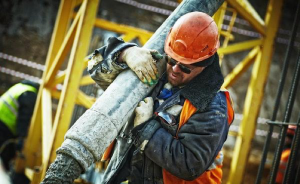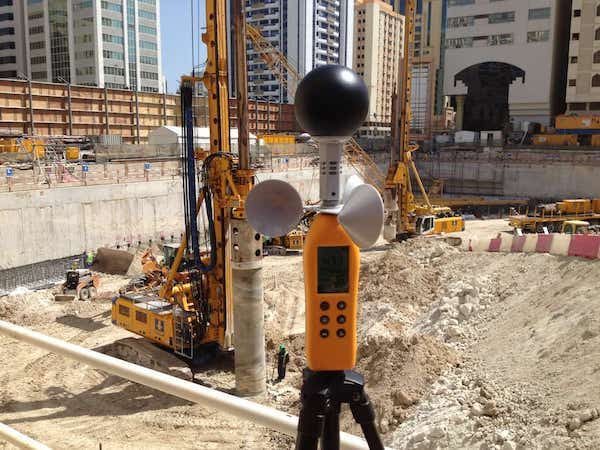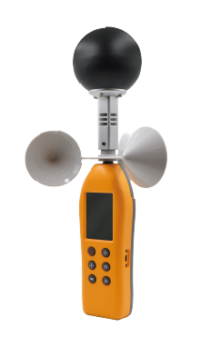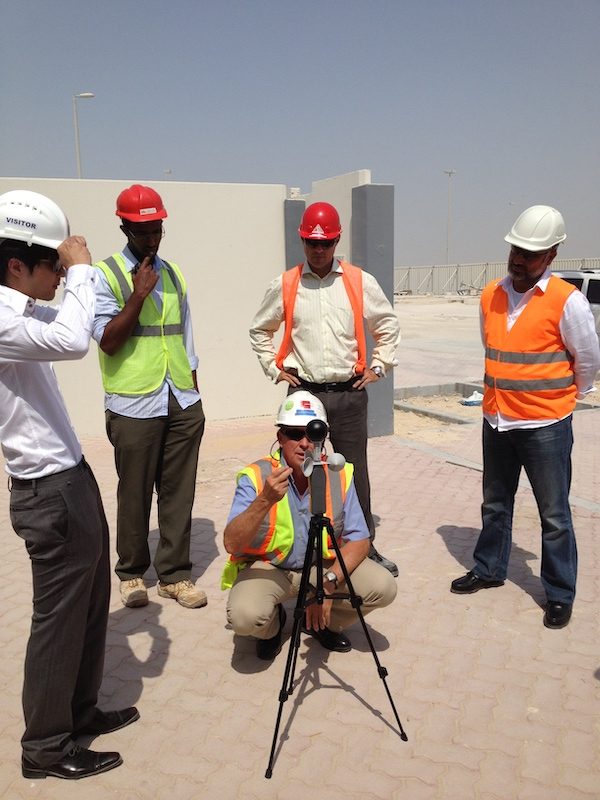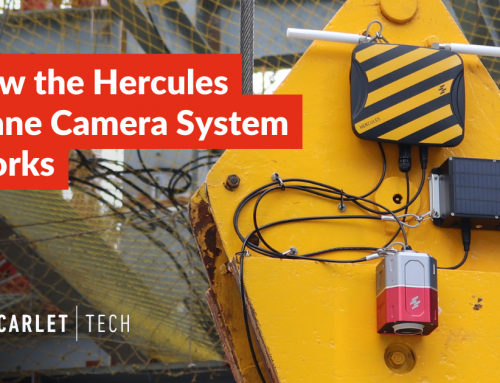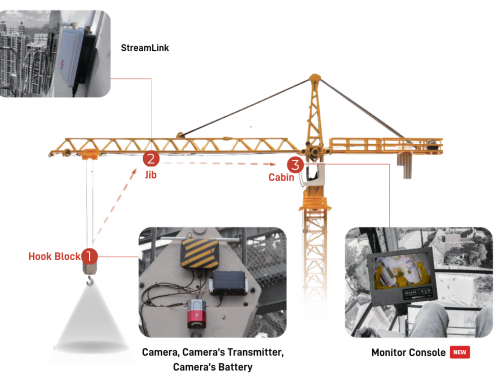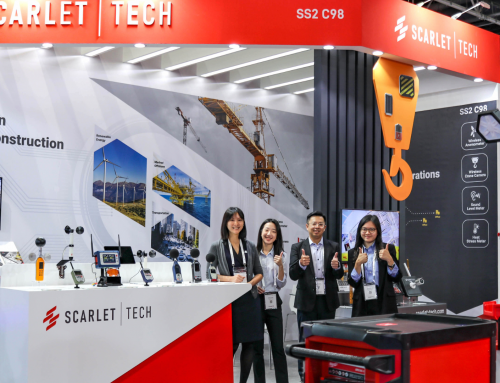Last Updated on
Heat Stress and Thermal Work Limit
Extreme heat is an occupational hazard in many industries. Exposure to extreme thermal environments can impair workers’ health, resulting in heat illness, injuries, reduced productivity, and even death. With summer approaching, it is important to be reminded of the precautions against heat stress to protect yourself as well as to prioritize your health and safety while at work.
What is Heat Stress?
The body dissipates heat by sweating and by increasing the blood flow to the skin surface. Performing heavy work in hot and humid conditions in protective clothing could put workers at risk, as the effectiveness of sweating is restricted and the heat within the body cannot be dissipated. This could lead to the rise of deep body temperature. If the body continues to get more heat than it can lose, the bodily mechanism of control over internal temperature will start to fail, causing heat stress.
Typical Symptoms of Heat Stress
- Difficulty in concentrating
- Heat rashes – red pimples on the neck, chest, or elbows
- Muscle cramps
- Increased heart rate
- Heat syncope – fainting or dizziness
- Heat exhaustion – weakness, fatigue, headache, nausea, and clammy skin
- Heatstroke – extremely high body temperature, hot and dry skin, confusion, convulsions, or even unconsciousness
Economic and Productivity Loss Due to Heat Stress
Heat stress in the workplace not only puts workers’ health at risk but also impacts their capacity to carry out tasks, causing economic loss. A significant correlation between degraded work performance and heat has been demonstrated in several studies. In Iran, Hajizadeh et al. (2014) showed that workers’ productivity decreased by 48%–94% when working in thermal workplaces. In Thailand, Langkulsen et al. (2010) found a decrease in the daily work output, ranging from 10% to 60% among workers on construction sites and in the pottery industry. In southern India, steel industry employees also reported diminished productivity upon exposure to severe occupational heat (Krishnamurthy et al., 2017).
Besides diminished work ability, interventions against severe heat illnesses such as hospitalization and the stop of work activity also led to a decrease in productivity. Declined productivity causes economic burden locally and internationally (Kjellstrom et al., 2009; Knittel et al., 2020; Wenz & Levermann, 2016), which has also been estimated. According to the International Labour Organization (2019), about 2% or higher of total working hours may be lost each year by 2030 due to heat stress, and the accumulated economic loss could reach US$2,400 billion. In Germany, Hübler et al. (2008) estimated the heat loss during 2004, which added up to about 540 million €, amounting to 0.03% of the GDP for the year. Zander et al. (2015) examined the costs of productivity reduction and absenteeism owing to heat in Australia. The result demonstrated that the economic loss was about US$711 per person per year, which would amount to about US$6.2 billion—an amount of 0.3 to 0.4% of Australia’s GDP—in total.
How to Assess the Risk of Heat Stress in My Working Area?
By monitoring the working environments’ conditions for heat stress indices, employers can identify the circumstances where their employees are at risk of heat stress and take precautions accordingly. Different methods have been developed for maximizing productivity and minimizing the risk to workers posed by thermal conditions. Two widely used heat stress indices are listed below.
WBGT
The wet-bulb globe temperature (WBGT) is incorporated into ISO 7243 and is commonly used to monitor heat stress in direct sunlight. This index gauges dry-bulb temperature, natural wet-bulb temperature, and globe temperature to give a composite temperature. Despite its wide acceptance, the natural wet bulb WBGT uses is relatively insensitive to wind speed. WBGT also falls short to take into account the metabolic rate, laborers’ workload, the protective equipment they wear, and the clothing materials. All these factors may introduce errors to the predictions. Hence, WBGT is considered very conservative and recommended to be used only as a general guide to possible heat hazards.
TWL
Thermal Work Limit, or TWL, is an index developed to address the inadequacies of WBGT. The TWL is calculated using dry-bulb, wet-bulb, globe temperature, wind speed, and atmospheric pressure. The unit of TWL is watts per square meter (W/m²), which shows the metabolic heat that can be continuously maintained in a given set of environmental conditions, acclimatization status, and clothing materials. The lower the TWL level, the higher the risk of heat stress.
When the TWL is too low, even work at low rates cannot be safely carried out continuously. Extra breaks, fluid intake, and other precautions are needed to ensure workers’ safety. Since the TWL predicts the maximum workload that can be carried out without the workers exceeding a safe deep body temperature, it can practically help determine a safe work duration, prevent heat-related illness, and provide guidelines for work-rest cycling and hydration plans.
TWL monitor
The TWL has been tested in several studies and shown to be a more reliable heat stress index. In an investigation by Miller and Bates (2007), wherein 12 healthy, acclimatized young workers participated, the TWL accurately reflected the safe workloads in both an indoor chamber and an outdoor working site, whilst the WBGT value only showed small differences. A study by Chan et al. (2013) in Hong Kong further validated the efficiency of the TWL, finding that its accuracy was over 90%, with a low mean absolute percentage error equaling 4.3%.
Further evidence is provided in the study by Bates and Schneider (2008), where 22 workers in the UAE were under survey for three days. The result indicated that while the WBGT identified some conditions as too severe to work, however, well-hydrated, self-paced workers could actually maintain their performances with no heat illness effects, just as the TWL estimated. In addition, a study by Farshad et al. (2014) corroborated the performance of the TWL in assessing thermal conditions on construction sites in Iran and highlighted its merit in “providing a practical and effective strategy for managing thermal stress.”
To date, as an index for heat assessment that combines health with productivity, the TWL has been adopted by DOH (Department of Health – Abu Dhabi) and OSHAD (Abu Dhabi Occupational Safety and Health Center) for occupational heat management. In Abu Dhabi’s annual Safety in Heat program, it is used to determine the risk level of a worksite and to give instructions of required interventions in different working zones. A remarkable reduction of 79.5% in heat-related treatment and emergency cases and a 50% decrease in serious heat illness cases was achieved in this program (Joubert et al., 2011).
TWL is also accepted as a valid assessment tool for heat stress in the AIOH (Australian Institute of Occupational Hygienists) Heat Stress Standard and is widely implemented in Australia’s underground mining industry and sports medicine. In Brake and Bates’ (2000) study, implementation of TWL has yielded a reduction of heat illness from 31 to 18 per million working hours. 4cRisk Pty Ltd implemented the TWL in their heat stress monitoring programs in a number of varying settings such as coal mines in Queensland, underground metalliferous mines in South Australia, and the Danakil Depression in Ethiopia. The result in Danakil Depression—the hottest place on the earth—is especially amazing: no heat stress event was reported after the implementation of the program (Burke & Hokins, 2013).
Working Zones’ Classification and Measures to Take
Based on the TWL, thermal environments can be classified into the following working zones:
| TWL (W/m2) | Working Zone | Interventions | Rehydration Plan (per hour) | Work-Rest Cycling |
| >220 | Very Low Risk Unrestricted Zone | ● No limits on self-paced work for hydrated, trained, acclimatized workers | 0.6~1 Liter/hr. | Safe for all kinds of self-paced work |
| 140-220 | Low Risk Acclimatization Zone | ● No added restrictions for acclimatized workers ● Unacclimatized workers should not work alone in this zone. | ||
| 115-140 | Medium Risk Buffer Zone | ● No unacclimatized workers ● No working alone ● Provide shaded areas for breaks. ● Ensure proper ventilation.
| Light Work 1~1.2 l/hr. | Safe for self-paced light work |
| Heavy Work >1.2 l/hr. | 45 mins work – 15 mins rest | |||
| <115 | High Risk Withdrawal Zone | ● No unacclimatized workers ● No working alone ● Ensure proper ventilation ● Provide bottled water and ensure fluid intake. ● Provide shaded areas for breaks. ● Perform dehydration testing. | All Work >1.2 l/hr. | Light Work 45 mins work – 15 mins rest |
Heavy Work 20 mins work – 40 mins rest |
(Data source: Working in Heat Procedures and Training Manual (Abu Dhabi Ministry of Labour, 2009)
As shown in the table, when the TWL exceeds 220 W/m2, all kinds of self-paced work for hydrated, trained, and acclimatized workers can be safely carried out continuously, while when the TWL falls between 140 W/m2 and 220 W/m2, unacclimatized workers should not work alone. If the TWL is below 140 W/m2 yet still above 115 W/m2, the workers should be fully aware of the increased risk of heat stress. No unacclimatized workers should be allowed, and working alone needs to be avoided. In this working zone, workers must have access to adequate water and cool, shaded areas for breaks. If the TWL does not even reach 115 W/m2, the risk level is high. Only essential maintenance work or rescue operations should be allowed. No one should work alone under this condition, and those who do work must follow the work-rest schedule and drink at least 0.6 liters of water every 30 minutes. All signs of heat stress must be carefully monitored, and dehydration testing should be performed at the end of the shift.
A Reliable and Cost-Effective Heat Stress Meter
Understanding the heat stress index and having a reliable meter to measure it is important for preventing heat-related illness and augmenting occupational safety in thermal workplaces. Prudently monitoring the environmental conditions and heat stress index, maintaining hydration, taking regular breaks, and resting in cooler areas all together can help to avoid overexposure.
Scarlet TWL-1S is a heat stress meter specifically designed for TWL and WBGT measurement. It not only helps to recognize hazardous conditions but saves the trouble of memorizing the regulations. Its interface displays a work-rest schedule and recommended hydration plan based on the TWL value, with the backlight showing different colors according to the risk levels. To help workers follow the work-rest cycling, a timer function can be activated, which counts down the remaining time before the next break. At the end of the countdown, the remote pager will be triggered to alert workers to rest or restart their work.
Scarlet TWL-1S is endorsed by the DOH, OHSAD, Dubai Municipality, ADNOC group, Emirates groups, Dubai DP world, and other major contractors as a standard heat stress monitor at the worksite. It has also been applied to Al Fara’a General Contracting (AFGCO) group’s project in Abu Dhabi. The great reduction in heat-related illness in programs wherein TWL-1S was used spoke for the effectiveness of this compact device. In Emirates Group’s heat campaign, for example, reportable heat illness cases dropped 60%. Furthermore, not a single heat illness-related case was reported in 4cRisk’s heat stress management plan for the LNG project in Queensland.
For more information about heat stress management, click here.
If you are looking for reliable and cost-effective heat stress monitoring, feel free to check TWL-1S Heat Stress Monitor.

